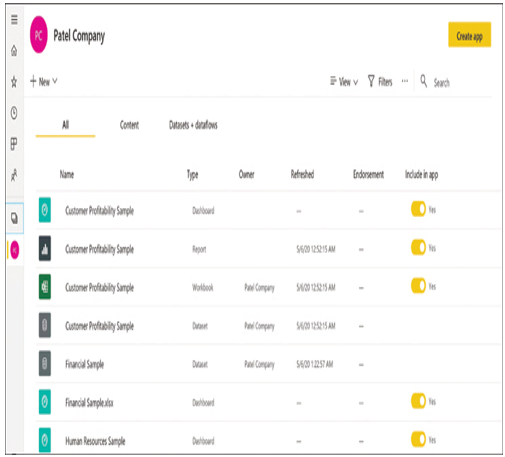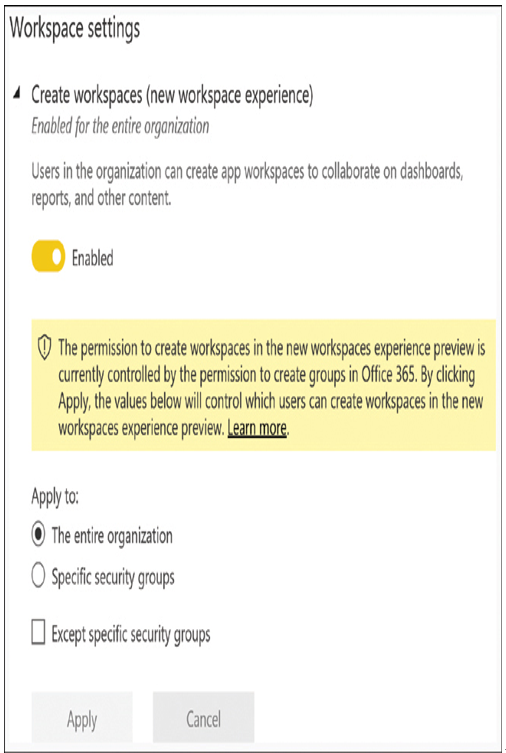Compare and contrast dashboards and workspaces
As noted in Chapter 1, “Describe the business value of Power Platform,” Power BI supports three types of distributable content: reports, dashboards, and apps. The report is the basic content unit, a multipage document that developers can use to publish large amounts of data in various formats. From a report, the developer can create dashboards, which are limited to a single page and consist of visual elements extracted from a report. An app is a means of packaging Power BI content from various sources for distribution as a freestanding unit.
When a user registers a Power BI account, the service creates a workspace for that user. A workspace is a private area of the service in which a user can work on their content prior to sharing it. A workspace can contain multiple Power BI elements, including data sets and Excel workbooks, as well as dashboards and reports, as shown in Figure 3-31.

FIGURE 3-31 A default workspace in the Power BI service
When the content is ready, the developer can then share individual elements or use the workspace as a container to create an app from its entire contents. Although it is possible for single developers to create Power BI dashboards and reports in their individual workspaces and then share them with consumers all over the network, Power BI can also be a collaborative development environment.
Users can create multiple workspaces in addition to the default one and provide other users with access to them. Using a shared workspace, a team of developers can work together to create Power BI content and keep it private until it is ready to share with consumers.
Power BI administrators control the ability to create new workspaces using the interface shown in Figure 3-32, found on the Tenant settings page in the Power BI admin portal. Administrators can grant the permission to everyone, to specific groups, or to everyone except specific groups.

FIGURE 3-32 The Workspace settings controls in the Power BI admin portal
Power BI supports two types of workspaces:
■ Classic workspaces—Use an automatically created Office 365 group to control access to the space
■ New workspaces—Have four workspace roles that administrators use to control access, as follows:
- ■ Admin—Provides all capabilities, including the ability to assign and revoke workspace roles, including other admins
- ■ Member—Includes all contributor permissions; provides the ability to publish and share apps and add members of the same or lesser roles
- ■ Contributor—Allows users to create, edit, and delete workspace content and publish reports to the workspace
- ■ Viewer—Allows users to view and interact with workspace content and read the data in workspace data sets
Exam Tip
As of mid-2020, the new workspace is the default type created in the Power BI service, although it is still possible to create classic workspaces. Candidates preparing for the PL-900 exam should be aware that many Power BI resources might not be updated to reflect the new workspace type and its default status.